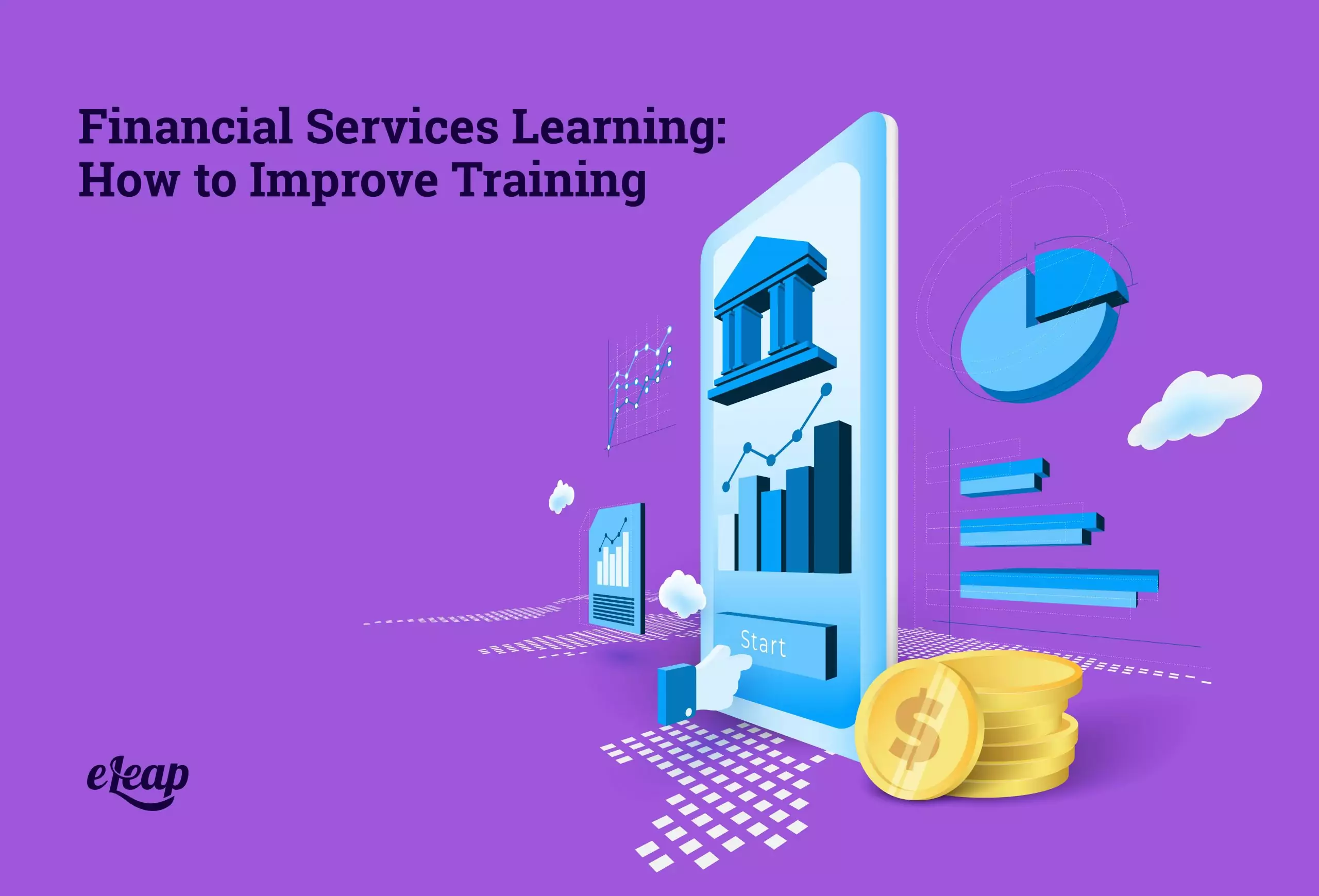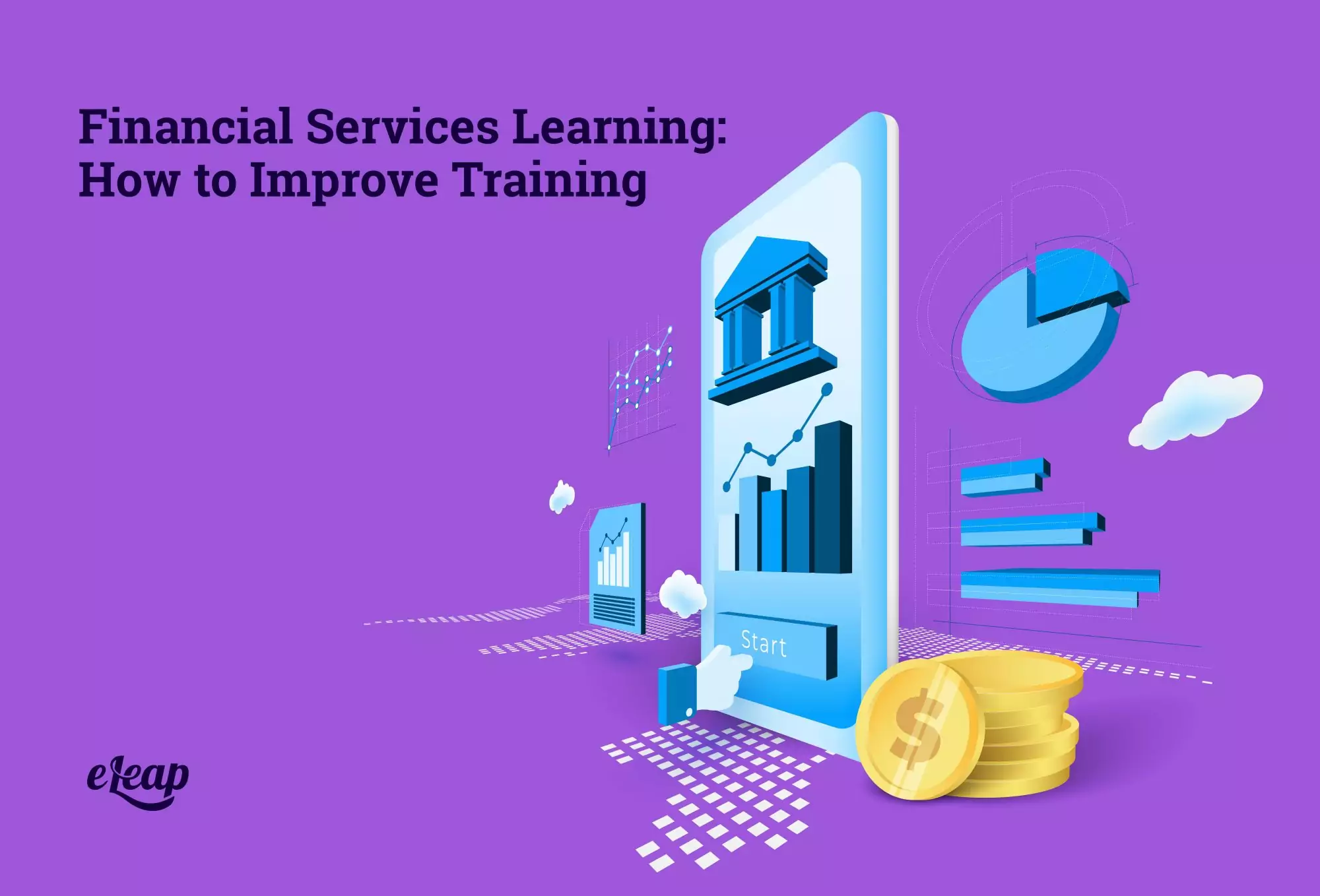Financial Services Learning: How to Improve Training

Learning and development (L&D) plans are vital to financial services organizations. From banks and credit unions to mortgage brokers and everything in between, ensuring that your team members are prepared to handle today’s challenges is critically important. Financial services organizations must be prepared to handle any number of threats, from changing tax rules to government regulations, cybersecurity threats, and much more.
The good news is that learning and development can provide your team members with the knowledge and skills necessary. No, training is not a panacea. It won’t magically remove cybersecurity threats or ensure that you’re suddenly in compliance with industry rules or government regulations. However, it is the foundation for achieving those goals.

How Does Financial Services Training Help?
While L&D is not a cure-all, it is the key to closing the gap between noncompliance and compliance, between risk and security, and between ignorance and knowledge. It’s about creating a roadmap about where you want your organization to go, and then embarking on the journey to get there.
However, the type of training you deliver matters a great deal. You must provide transformational training that alters workplace behaviors, not training that simply deluges learners with raw data with the expectation that they will somehow translate it into value-added actions on their own.
The Importance of Creating Competency-Based Learning Programs
Financial services firms will find that the basics of creating competency-based learning programs for their employees are pretty much the same as in any other industry. You will need to follow several important steps here, including:
Analyze: The first step is to analyze where your organization stands. What’s the current state versus where you want to be? Without knowing where you’re starting from, you cannot chart a course toward success. What solutions are necessary to help you bridge the gap between those two positions?
There’s a temptation to make this phase long and drawn out, but it need not be. Using open-ended questions allows you to follow the breadcrumbs to innovative solutions. These include the following:
- What are your largest hurdles with a particular performance measure?
- Why do those hurdles exist? What happened to create or exacerbate them?
- How challenging is it to find a solution to the issue?
- In a perfect world, how would a particular performance measure drive success?
Ask these questions not only of your L&D team but of your employees. Get group consensus and look for patterns. Delve into those patterns and find commonalities. Most of those can probably be tied to training in some way.
Once you have defined the solutions necessary, it’s time to tie them to competencies. Your LMS is an essential tool in assigning competency-based training to key employees based on their job descriptions, duties, and even career development paths in some cases.
Develop: Next, you need to begin developing assets that help your learners grow and develop. These could be modules on cybersecurity best practices, on handling personally identifiable information, or anything else. All assets should be based on the results of your previous analysis, though, so that they help your learners develop and move the organization toward where you want to go.
Your assets must be modern, compelling, and support learner success. That will require doing several important things here, including:
- Mixed Media: Use a mixture of different media and formats. Multiple-choice questions are great, but go further. Add video learning, gamified content, infographics, and anything else that will drive positive outcomes and improve success.
- Microlearning Matters: It is also important to create microlearning courses. These “chunk” courses up into smaller segments that learners can complete faster and have a better chance of retaining.
- Use Scenario-Based Learning: Create realistic scenarios within your learning content. Then require your learners to complete those scenarios. Choose-your-own formats, roleplaying, and other methods work well to truly drive home lessons.
- Practice, Practice, Practice: Your LMS is a vital tool, but it is only one of many that you should be using. Give your learners opportunities to put their knowledge to use outside the LMS, but within safe environments where a wrong move won’t necessarily spell disaster.
Support: Learning is not a “once and done” sort of thing. Success is not defined as a passing grade. To really affect transformational change in your organization, you will need to support learners after training. It’s also important to hold them accountable for their ability to put learning into practice within their daily responsibilities.
You’ll discover a wealth of support options out there that enable better outcomes and help learners retain knowledge. These can include:
- Curated Content Banks: These offer a wealth of information on topics touched on during learning and can even expand on those for some people.
- Job Aids: These are tools that help your learners remember information and connect the dots to improve their performance.
- Coaching: From mentoring to performance management, use any opportunity to coach and grow your team toward where you need them to be.
- Accountability Measures: In addition to your LMS and other options, implement accountability measures that help encourage your learners to integrate what they have learned into their daily responsibilities.
Financial Services Learning and Development Success
Ultimately, a concerted L&D strategy is essential for achieving success in the financial services industry. The right LMS is part of that, but you must also understand the skill gaps within your organization and the hurdles you face, whether those are regulatory in nature, or relate more to cybersecurity risks, or something else entirely.
With an overarching strategy and a willingness to create competency-based training programs, you can help ensure that each employee has the tools required to move the organization forward.